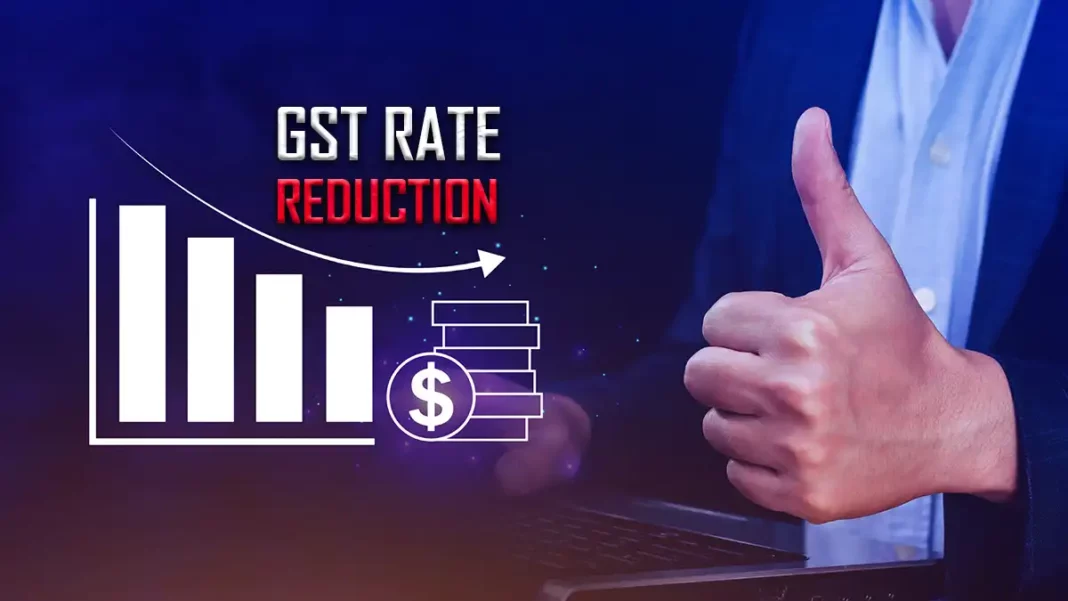It appears that many things should have their GST rates reduced. At its September 3 meeting, the GST Council unanimously approved this significant rate rationalization. Since it would have been politically inconvenient to resist the rate reduction, given the belief that it would benefit the average citizen, the opposition-ruled states concerned about revenue loss were unable to do so.
Why weren’t these cuts made sooner if they are beneficial? There has long been a need for the GST to be reformed and its rates lowered because it is an indirect tax that stymies economic growth.
The finance ministry has maintained that there is no connection between these rate reductions and the punitive tariffs imposed by US President Donald Trump on Indian exports. It is maintained that the government has been considering these measures and has been making plans to put them into effect.
The question of “why now and why not incrementally over time” remains unanswered as policymakers realized they needed to lower rates. For example, discussions about reducing insurance premiums have been ongoing for more than a year. And what could have been more sensible than the recently announced reduction or elimination of prices for food, medications, and educational materials?
Influence on Indian Demand
Employment, growth, and demand in the economy would all be significantly impacted by this. It would affect investment, stock markets, and the rupee-dollar parity because of the hardship and uncertainty. Input, raw material, and service suppliers would also be impacted, in addition to direct exporters.
Due to the labor-intensive nature of many of the goods shipped to the US, unemployment would increase, which would further reduce economic demand.
An increase in demand in the economy is the remedy for this hit. The most obvious option is to increase internal demand. If their actual earnings rise, India’s 145 crore people, the majority of whom are impoverished and consume little, can create demand. Additionally, indirect taxes will be reduced by decreasing. Additionally, cutting prices to reduce indirect taxes would increase demand as long as the savings are transferred to customers.
Would that be sufficient to offset the decline brought on by the decline in exports?
Trump’s punitive tariffs will impact demand in multiple ways. Initially, when exports to the United States decrease. Second, since all nations will have surpluses and will attempt to transfer them to other countries, exports to other nations are also expected to decrease. Third, other nations would attempt to get additional concessions and discounts from Indian exporters since they know they will be severely impacted. Fourth, increased tariffs will probably cause the global economy to slow down, and a decline in demand will begin in the US and eventually spread to other nations. Fifth, there will probably be a drop in demand as a result of low worker wages worldwide. Lastly, investments are expected to decline as a result of uncertainty.
These elements have the potential to send the global economy into stagflation or possibly a recession, which would cause global demand to plummet and have a far greater effect on India’s exports than the US.
India is increasing demand.
Since exports are zero-rated, meaning they do not pay GST, exporters would not profit from the reduction in GST rates. Thus, the demand from exporters will not change.
It is anticipated that the decline in export demand will be offset by an increase in demand in the remainder of the economy. Is it going to occur?
The GST rates will decrease for the majority of things; however, they will increase for certain categories. The revenue secretary estimated that the net loss of income would be almost Rs 48,000 crore based on the comprehensive data for 2023–24 that the finance ministry had access to but which was regrettably not made public. To term it a loss was a pointless act of sensitivity.
To what extent will this increase demand?
Higher-priced luxury goods like clothing, vehicles, and business-class airline seats will see price rises due to rate increases. The upper-middle class’s elastic demand for these goods would decline.
When rates are lowered, the costs of common consumption items will drop, which may increase demand for them or result in consumer savings that can be used to pay off debts or purchase other goods. There would be a subsequent rise in demand.
According to the finance ministry, it is currently unable to assess this rise. Rate reductions for a few items have been made during the last eight years of the GST’s operation, although this hasn’t increased the GDP’s share of spending. Of course, the epidemic and other things obscured this.
However, it doesn’t appear feasible that a net decrease in GST collection of Rs 48,000 crore would result in a rise in demand of at least Rs 4.4 lakh crore. The demand reduction will be a multiple of this amount, as argued in the previous section. Therefore, it is unlikely that the announced reductions in GST rates will make up for the decline in demand brought on by exports.
More Significantly
Only the organized sector is subject to GST; the unorganized sector is not. Therefore, the rate drop will result in lower pricing for the organized sector but not for the unorganized sector. Demand will therefore be increased in the former rather than the latter. Due to GST, the unorganized sector, which includes the micro and a large portion of the small sector, will continue to suffer.
Demand will move from the labor-intensive unorganized sector to the capital-intensive organized sector as a result of this relative price adjustment. Any boost in demand and employment in the organized sector brought on by the rate decreases will be outweighed by this change in demand. The economy’s K-shaped expansion will get stronger. As general demand decreases, this will result in a slowing of the expansion of the organized sector.
In Conclusion
In summary, the benefits of GST rate reductions for the organized sector are probably going to be outweighed by the negative effects on the unorganized sector.
All of this stems from the structural issues with the GST brought on by the sizeable unorganized component of the Indian economy. When the GST was introduced, this was not considered. The GST requires immediate modification to address this structural issue now that it is a reality. The necessary reform does not include rate reductions and a few recently announced legal amendments. In summary, increasing domestic demand, which can be produced by 145 crore Indian tons of sand, and reducing reliance on export markets are both wise decisions.
FAQ
1. On which items is GST reduced?
Key categories have seen rate reductions: daily essentials have dropped from 12%/18% to 5%, agricultural equipment from 12%/18% to 5%, healthcare services to 5% or exempt, and education services are now fully tax-exempt. GST on automobiles and electronic appliances has been reduced from 28% to 18%.
2. Is GST still 9% in 2025?
The current standard GST rate in 2025 is 9%.
3. When was the GST reduced?
Tata Motors, India’s largest commercial vehicle manufacturer, today announced that it will pass on the full benefit of the recent GST reduction on its entire commercial vehicle range to customers, effective 22nd September 2025, the date the revised GST rates come into effect.
4. What is the new GST tax slab for 2025?
The shift to a two-slab system of 5% and 18%, removing the earlier 12% and 28% rates, will make taxation more transparent and easier to follow. At the same time, a 40% tax on luxury and sin goods such as pan masala, tobacco, aerated drinks, high-end cars, yachts, and private aircraft ensures fairness and revenue balance.
5. What are the GST changes from 1 January 2025?
Generation Restriction: Starting January 1, 2025, e-Way Bills can only be generated for documents issued within the preceding 180 days.
Also Read: Melanie at CraigScottCapital

I am a content writer with proven experience in crafting engaging, SEO-optimized content tailored to diverse audiences. Over the years, I’ve worked with School Dekho, various startup pages, and multiple USA-based clients, helping brands grow their online visibility through well-researched and impactful writing.


